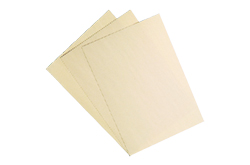
Panasonic Corporation recently launched the R-5410 printed circuit board (PCB) prepreg, a halogen free material for multi-layer circuit boards with ultra-low transmission loss. The R-5410 material is well suited for automotive radar, 5G base stations and other mmWave systems. The material is compatible with multi-layer antenna construction using standard PCB lamination processes and equipment, which improves antenna efficiency, reduces material and manufacturing costs and provides design flexibility.
mmWave frequencies are enabling a new generation of automotive, terrestrial wireless, satellite and other applications. mmWave radar is a core sensor for the advanced driver assistance systems being deployed on new vehicles. Multi-element antenna beamforming architectures have been adopted for 5G base stations operating at the FR2 mmWave bands. The rapid adoption and wide deployment of these mmWave systems has increased the market demand as well as the performance requirements for the PCBs at the heart of these radios.
Historically, fluoropolymer-based materials were used for manufacturing antenna boards. However, fluoropolymers are intrinsically thermoplastic and can be difficult to process for multi-layer PCB construction. Panasonic’s R-5410 multi-layer circuit board material prepreg is manufactured using a unique non-fluoropolymer thermosetting resin system, which is halogen free and has ultra-low transmission loss. This new system has stable dielectric properties, good adhesion strength—even using low profile copper foils—and has 0.079 dB/mm loss at 79 GHz, the lowest in the industry for thermosetting resin circuit boards. The R-5410 material system supports multi-layer antenna construction using standard manufacturing processes and equipment for circuit board lamination, enabling the development of compact, high density modules with integrated antennas for lower material and processing costs.
Panasonic Corporation
Osaka, Japan
www.panasonic.com
